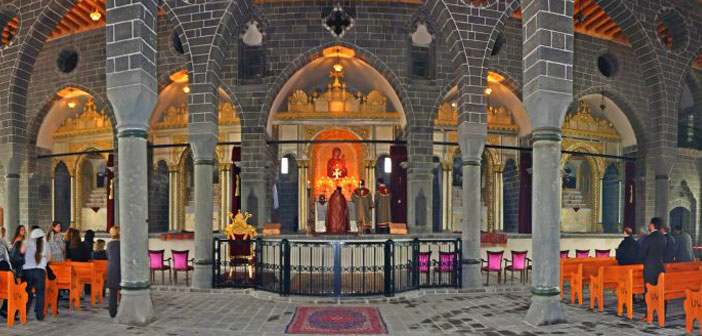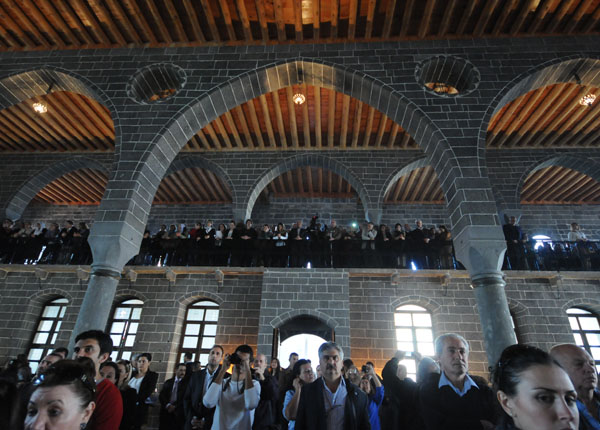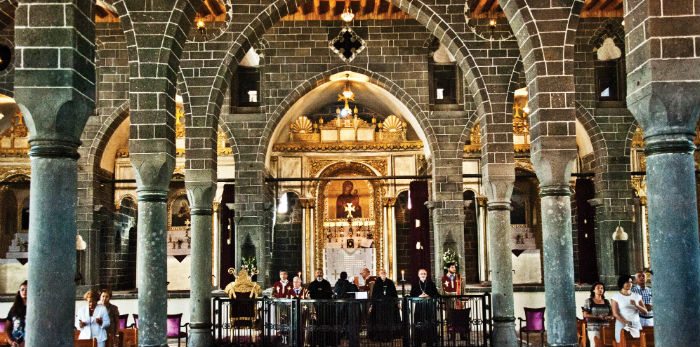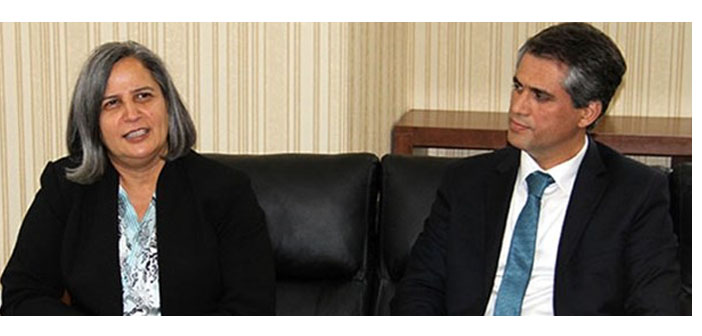Surp Giragos Church, the largest Armenian church in Middle East, is among the places in Sur province of Diyarbakir that are expropriated by the decision of the cabinet. With the same decision, Syriac, Chaldean and Protestant churches are also expropriated.
While clashes and curfews continue in Diyarbakir, the cabinet took an urgent expropriation decision. Surp Giragos Church, the largest Armenian church in Middle East, is among the places in Sur province of Diyarbakir that are expropriated by the decision of the cabinet. Left to its own fate for years, the church was finally restored and opened to worship in 2011. With the same decision, Syriac, Chaldean and Protestant churches are also expropriated.
According to the cabinet decision published in Official Journal on March 25, an “urgent expropriation” decision is taken concerning 6.300 plots of land in Sur province. With this decision, many places in Abdaldede, Alipaşa, Cemal Yılmaz, Camikebir, Cevatpaşa, Dabanoğlu, Hasırlı, İnönü, İskenderpaşa, Lalebey, Malikahmet, Özdemir, Süleymangazi, Savaş, Şemhane and Ziyagökalp neighborhoods and two neighborhoods in Yenişehir province are expropriated.
Surp Giragos Church, the largest Armenian church in Middle East, Surp Sarkis Chaldean Church, Armenian Catholic Church, Virgin Mary Ancient Syriac Church and Protestant Church are among the places that are expropriated.
Legal action must be initiated
Speaking to Agos, Diyarbakir Metropolitan Municipality Cultural Heritage Director Nevin Soylukaya stated that all churches and properties belonging to the foundations are expropriated. Soylukaya also said that some properties belonging to the municipality are also expropriated and they will initiate legal action. She also urged the owners of the expropriated properties to take legal action.
Walls of Diyarbakir and Hevsel Gardens were added to UNESCO World Heritage List in 2015. And Sur province is considered as a buffer zone for Walls of Diyarbakir.
There is no other church open to worship
Sur is the only center that have places of worship for non-Muslims. Surp Giragos Church, Surp Sarkis Chaldean Church, Armenian Catholic Church, Virgin Mary Ancient Syriac Church and Protestant Church are in Sur and currently closed to worship. There is no other church in Diyarbakir.
Chaldean Church belongs to Mor Petyun Chaldean Catholic Church Foundation and Virgin Mary Ancient Syriac Church belongs to Virgin Mary Ancient Syriac Church Foundation. Apart from them, in Diyarbakir, there are 6 churches that is owned by various state institutions.
Millions spent for restoration
Surg Giragos Armenian Church was left to its own fate, after its congregants left. With legal changes in foundation administration, people from Diyarbakir living in İstanbul formed a new administrative body and initiated restoration work. With the help of funding campaigns started in the US and other countries, the church was restored. About 2 million liras was spent for restoration. And it was awarded with various prestigious restoration awards.
The largest Armenian church in Middle East
The name of the church is mentioned for the first time in 1610-1615 by Simeon of Poland in his travel notes. Being one of the most important structures of Armenian architecture history, Surp Giragos Church is the largest Armenian church in Middle East. It was restored in 1722 and reconstructed and enlarged by Armenian architects Şahin, Saruhan and Yeram in 1729.
Zakarya Mildanoğlu
Diyarbakir had been one of the most important cities in Armenian history. In “Amidai Artsakanknerı” (Echoes of Amida), published in New York in 1952, its names are listed as the following: Amida, Amed, O’mid, Emit, Amide, Amedu, Kara Amid, Dikranagerd, Diyarbekir.
And “Diyarbakir and Armenians” is a history that was born before the Christian era and started to die away in '80s. Many topics, including education life, professions, livelihoods, religious life, literature, publishing life, traditions, cultural institutions, political life, relation with the state and the role of local governing of Diyarbakir Armenians are being researched and new researchers are welcome.
The relation between Diyarbakir and Armenians started to rupture slowly in 1915. People of Dikranagerd hosted people from Muş, Bitlis and Harput, who were managed to survive on the road to Der Zor and then, they walked to Der Zor with them. Infants and girls were taken by the locals. Some of them were converted to Islam. Some of the survivors returned. They tried to build a new life, but the problems like unemployment, housing and security became unbearable. They went to Istanbul and then they were scattered to the world. But how can you forget your homeland? They couldn't have forgotten it.
During Ottoman times, plunderers had eyes for churches, monasteries and graves. When we turn the pages of history, we see that some families in Diyarbakir considered Armenian churches and monasteries as a means of living and plundered all the tangible and intangible assets of Armenians. With the foundation of the republic, these assets were considered as ready-to-hand sources for constructing schools, post offices, orphanages, banks and military buildings. They destroyed them by cannonballs and dynamites and used the stones of those Armenians buildings. They wanted to wipe the traces of Armenian masonry off.
Located at the center of Diyarbakir, Surp Giragos Church is one of the symbols of the city with its size and glorious bell tower. The bell tower was struck by lightning in 1913. It was rebuilt in the same year by the golds provided by prominent Armenian people. In the dark days of 1915, this bell tower was destroyed by cannonballs, since it was taller than the minarets.
The name of the church is mentioned in 1610-1615 for the first time by Simeon of Poland in his travel notes. Being one of the most important structures of Armenian architecture history, Surp Giragos Church is the largest Armenian church in Middle East. It was restored in 1722 and reconstructed in a larger scale by Armenian architects Şahin, Saruhan and Yeram in 1729.
In June 10, 1881, the entire church was devastated by a fire, but it was rebuilt in 1883.
Damaged in 1915, the church was used as quarters by German commanders. Then, it was served as a cotton storage for Sümerbank. Having opened to worship in 1960, the church became deserted, since Armenians started to migrate to the western cities or Europe for various reasons. Since it has no congregant, it wasn't open to worship and sometimes it is plundered. In time, due to neglect, some parts of the church collapsed and became dysfunctional. With the efforts of Surp Giragos Church Foundation and support of Diyarbakir Metropolitan Municipality, the restoration of the church was ended and it was opened to worship in 2011.






